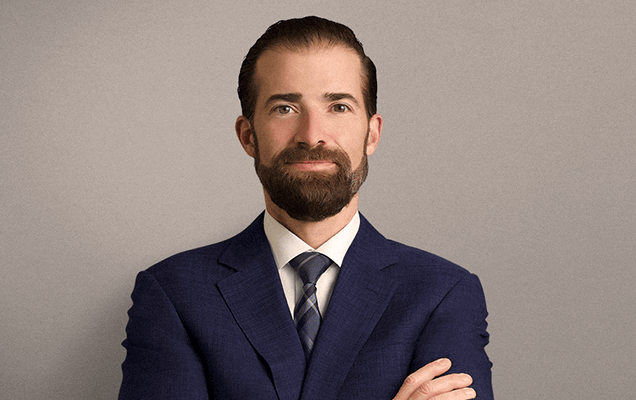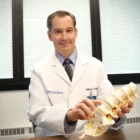If you’ve been living with the symptoms of hemifacial spasm, you’ve probably wondered time and time again why they won’t just disappear. You’ve probably even asked your doctor on more than one occasion, “Can hemifacial spasm go away on its own?”
Unfortunately, in most cases this condition doesn’t disappear; it’s more likely that it will intensify as time passes. The good news is that with careful management and non-invasive surgical intervention it’s possible that you can live your life normally and — most importantly — symptom-free.
What Is Hemifacial Spasm?
In simple terms, hemifacial spasm is a condition in which the facial nerve is misfiring, causing the muscles on one side of the face to spasm or “tic” involuntarily. It can be as subtle as a chronic eyelid tic, or as pronounced as the entire side of the face contorting. Regardless of the level of intensity, hemifacial spasm can be an uncomfortable issue that can deeply impact your lifestyle.
What Causes Hemifacial Spasm?
Normal facial movement is controlled by the seventh cranial nerve. We all have two facial nerves, one for each side of the face. Hemifacial spasm usually only affects one side of the face and is often caused by a blood vessel, such as an artery, pressing against the facial nerve near the brainstem. As the blood moves through the vessel, it puts pressure against the nerve, causing irritation and sporadic “misfiring.” In other, very rare instances, hemifacial spasm can be caused by a benign lesion or tumor pressing against the nerve, a vascular malformation, multiple sclerosis or some sort of injury or damage to the nerve. Your neurosurgeon and neurologist will be able to help you untangle the cause of your hemifacial spasm and determine the best course of action for treatment.
Can Hemifacial Spasm Go Away?
It’s very rare that hemifacial spasm will simply go away on its own. In many cases, it continues to intensify, often becoming worse and involving more and more of the small muscles on the affected side of the face. This is why it’s important to seek diagnosis and treatment if you suspect you may be suffering from hemifacial spasm symptoms. The sooner it’s diagnosed, the quicker you can be on the road to freedom from the embarrassing and debilitating symptoms caused by this condition.
What Can Be Done About Hemifacial Spasm?
The first step in being able to effectively treat your hemifacial spasm is to seek out a diagnosis. Your general practitioner should be able to refer you to a reputable neurologist for assessment and diagnostic tests to rule out other causes. Once you have the definitive diagnosis in-hand, you can start considering the treatment options.
There are a number of options for hemifacial spasm treatment, each very different from the other. One of the most commonly used treatment strategies for hemifacial spasm is regular injections of botulinum toxin. The second option is microvascular decompression, a surgery that can offer a permanent and drug-free means for relieving your hemifacial spasm symptoms.
Are you out of options
to eliminate your pain?
Botulinum Toxin (Botox) Injections for Hemifacial Spasm Symptoms
Doctors have been using nerve-blocking injections for several years to help relieve the symptoms of hemifacial spasm. Botulinum toxin (Botox) is the most widely used agent for hemifacial spasm. The use of the botulinum toxin is somewhat effective but leaves the affected areas of your face numb and can cause weakness. Some people don’t notice any change at all in the frequency or intensity of their spasms but will still lose some facial sensation, as is common with Botox injections.
These injections are done on an outpatient basis and you will be able to go home shortly after your procedure. Your doctor will use a local anesthetic to make needle insertion more comfortable. You’ll notice results fairly rapidly — Botox takes an average of about 72 hours to take effect, although results may not be noticeable until seven days or so after injection.
It’s important to keep in mind that Botox injections must be repeated every few months to maintain efficacy and ensure that the symptoms don’t return.
What Is Microvascular Decompression and How Is It Used for Hemifacial Spasm Intervention?
By far the most effective treatment for hemifacial spasm is that of microvascular decompression surgery (MVD). When you opt for MVD surgery, you can expect a nearly complete to complete cessation of hemifacial spasm symptoms. The greatest benefit of microvascular decompression surgery is that all the nerves and surrounding structures are left intact and undamaged.
Because MVD is an intracranial surgery (inside the skull), it will require a bit of recovery time. Be sure to arrange for help once you’ve arrived back home — the first two weeks should be spent focusing on recovery.
On the day of your surgery, you will be admitted to the hospital. You’ll be asked to fill out paperwork such as waivers and then meet with your neurosurgeon and anesthesiologist. When they’re ready, you will be prepped for surgery.
Microvascular decompression is performed under general anesthesia by an experienced neurosurgeon. It’s a fairly unique procedure — your surgeon will create a small incision and then make a quarter-sized opening at the base of the skull. This allows for the use of a surgical microscope and the necessary instruments. The nerve and offending vessel are isolated, at which point the surgeon lifts the vessel away from the nerve, placing tiny Teflon pads between the two structures, effectively dampening the impact from the vessel on the nerve. Most patients notice immediate relief from their hemifacial spasm symptoms once they’ve undergone the surgery.
You will be taken to recovery where you’ll wake up from anesthesia. Then, when ready, you’ll be moved to the ICU for overnight observation. You may be asked to stand and even walk a bit once the anesthesia has completely worn off. The following day (about 24 hours later) you’ll be moved to a room for the remainder of your two- to three-day hospital stay.
When you’re released to go home, you’ll be given instructions on what you need to be doing and watching for over the next week. You may also be sent home with pain medications. You will need to arrange for transportation home, as it is not advised you drive yet. It’s helpful if someone nearby for at least the first five to seven days to take care of daily tasks such as cooking and housework. You may feel tired and have some pain at the incision site — this is normal.
Once you’ve passed the initial recovery period, you’ll return to your doctor’s office (seven days after surgery) so they can check your incision and make sure your recovery is going as expected. You will probably be cleared to increase your activity level a bit. By three weeks into your recovery, you can return to work (as long as you work in a light activity job or desk job). If you work in a job that requires a lot of lifting or rigorous activity, you may need to wait a little longer.
Living With Hemifacial Spasm
Regardless of the route you choose to take for managing your hemifacial spasm and its associated symptoms, it’s essential that you find a neurologist and neurosurgeon you trust. Once you’ve received your diagnosis for hemifacial spasm, you can start to take the steps needed to get your life — and your self-confidence — back from this treatable condition.
Authors of this Blog: The Facial Pain Team
Dr. William S. Cobb, MD, PHD, FAANS
Dr. Anthony D’Ambrosio, MD, MBA, FAANS
Dr. Rupa Juthani, MD, FAANS

About Dr. Anthony D'Ambrosio
Dr. Anthony D'Ambrosio is an accomplished neurosurgeon in North Jersey and a proud member of Neurosurgeons of New Jersey practicing primarily out of their Ridgewood office conveniently located on East Ridgewood Avenue. Dr. D’Ambrosio focuses his clinical practice on brain tumors, nervous system disorders, and facial pain disorders. He has expertise in a variety of complex surgical and radiosurgical techniques as well as minimally invasive procedures intended to successfully treat complex diseases of the brain. These techniques include micro-neurosurgery, microvascular decompression surgery and Gamma Knife radiosurgery. He's authored over 25 peer-reviewed journals and is the recipient of many awards.

About Dr. William S. Cobb
Dr. William Cobb is an accomplished neurosurgeon in North Jersey and a proud member of Neurosurgeons of New Jersey, practicing out of their Ridgewood office conveniently located on East Ridgewood Avenue. During his Neurological Surgery residency, he became passionate about the development and treatment of brain tumors affecting the brain and spine. Dr. Cobb uses state-of-the-art technology for surgical intervention in the treatment of tumors of the brain and spine including Gamma Knife radiosurgery. He has vast experience in using modern minimally invasive surgery for the treatment of degenerative spine and intervertebral disc disease. Dr. Cobb serves as the Director of Neurosurgical Oncology at Valley Hospital. He's accepting new patients.









